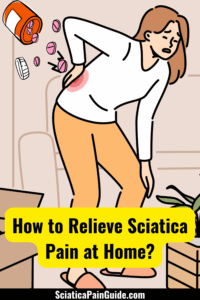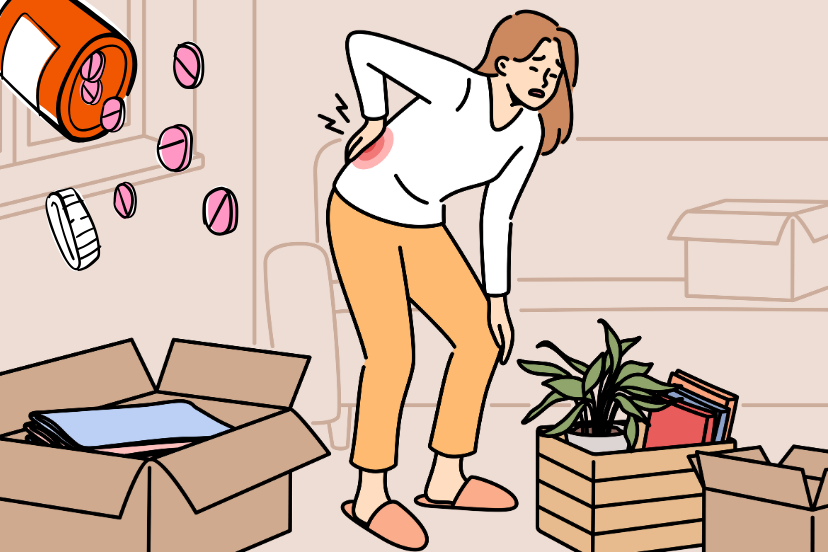How to Relieve Sciatica Pain at Home
Effective Remedies and Tips
Discover how to relieve sciatica pain at home with stretches, heat therapy, and lifestyle changes. Get natural relief and improve mobility! Sciatica pain can be debilitating, making even simple daily activities a struggle. If you suffer from sciatica, you know how important it is to find relief as quickly as possible. Fortunately, there are several at-home remedies you can try to ease your discomfort and improve mobility. In this guide, we’ll explore effective ways to relieve sciatica pain at home, helping you regain control of your life naturally.
Understanding Sciatica Pain
Sciatica is caused by irritation or compression of the sciatic nerve, which runs from the lower back down through the hips, buttocks, and legs. Common causes include herniated discs, spinal stenosis, and muscle imbalances. Symptoms typically include:
- Sharp, burning, or shooting pain in the lower back, buttocks, and legs
- Numbness or tingling in the affected leg
- Weakness in the leg or foot
- Difficulty sitting or standing for long periods
If you experience severe pain or loss of bladder/bowel control, seek medical attention immediately. Otherwise, the following home remedies may help alleviate your symptoms.
1. Stretching Exercises
Gentle stretching can help reduce tension and pressure on the sciatic nerve. Try these simple stretches:
Seated Piriformis Stretch
- Sit on a chair with feet flat on the floor.
- Cross the affected leg over the opposite knee.
- Lean forward slightly and hold for 30 seconds.
- Repeat 3 times on each side.
Knee-to-Chest Stretch
- Lie on your back with both knees bent.
- Bring one knee toward your chest while keeping the other foot flat.
- Hold for 30 seconds and switch sides.
- Repeat 3 times per leg.
Standing Hamstring Stretch
- Stand with one foot on an elevated surface (e.g., a chair or step).
- Keep the leg straight and gently lean forward.
- Hold for 20-30 seconds and repeat on the other leg.
How to Treat Sciatic Nerve Pain at Home
2. Hot and Cold Therapy
Alternating hot and cold packs can reduce inflammation and improve circulation.
Cold Therapy: Apply an ice pack wrapped in a towel to the affected area for 15-20 minutes. Do this every 2-3 hours.
Heat Therapy: Use a heating pad or warm towel to relax muscles and increase blood flow. Apply for 15-20 minutes several times a day.
3. Massage Therapy
A deep tissue or self-massage can help relieve sciatic nerve pain.
- Use a tennis ball or foam roller to apply gentle pressure to sore areas.
- Massage the lower back, buttocks, and legs using circular motions.
- Consider using essential oils like peppermint or lavender for added relaxation.
4. Stay Active
Although rest is essential, prolonged inactivity can make sciatica worse. Engage in low-impact exercises such as:
Walking
Walking helps sciatica by improving circulation, reducing inflammation, and promoting flexibility. It strengthens core muscles, alleviates nerve pressure, and prevents stiffness, making it an effective low-impact exercise.
Swimming
Swimming helps sciatica by reducing spinal pressure, improving circulation, and strengthening core muscles. The buoyancy of water minimizes joint strain, easing nerve compression and promoting pain relief.
Yoga
Yoga helps sciatica by improving flexibility, strengthening core muscles, and reducing nerve pressure. It also enhances posture, relieves tension, and promotes relaxation, easing sciatic pain naturally.
These activities promote circulation, strengthen muscles, and prevent stiffness.
5. Maintain Good Posture
Poor posture can worsen sciatica symptoms. Follow these tips:
- Sit with a straight back and use lumbar support.
- Avoid slouching or crossing your legs.
- Use an ergonomic chair and keep your feet flat on the floor.
6. Over-the-Counter Pain Relievers
Nonsteroidal anti-inflammatory drugs (NSAIDs) such as ibuprofen and naproxen can temporarily ease pain and inflammation. Always follow dosage instructions and consult a doctor if you have underlying health conditions.
7. Adjust Your Sleeping Position
Sleeping in the wrong position can aggravate sciatica. Try these tips:
- Sleep on your side with a pillow between your knees.
- If sleeping on your back, place a pillow under your knees.
- Use a supportive mattress and pillow to maintain spinal alignment.
8. Maintain a Healthy Weight
Excess weight puts pressure on the spine and can worsen sciatica symptoms. Adopting a healthy diet and engaging in regular exercise can help alleviate pain over time.
9. Try Natural Anti-Inflammatory Remedies
Certain foods and supplements may help reduce inflammation:
Turmeric: It contains curcumin, a powerful anti-inflammatory compound.
Ginger: Helps alleviate muscle pain and stiffness.
Omega-3 Fatty Acids: These are found in fish, flaxseeds, and walnuts and promote nerve health.
10. Mind-Body Techniques
Stress and anxiety can contribute to muscle tension and worsen sciatica. Relaxation techniques include:
Meditation: Helps reduce stress and pain perception.
Deep Breathing Exercises: Improves oxygen flow and relaxation.
Progressive Muscle Relaxation: Releases tension in different muscle groups.
When to Seek Medical Attention
While many cases of sciatica improve with home treatments, some symptoms require professional medical attention. Seek a doctor if you experience:
- Severe or worsening pain despite home remedies
- Persistent numbness or weakness in the leg
- Loss of bladder or bowel control
- Difficulty walking or balancing
- Symptoms lasting longer than 6 weeks
Early intervention can prevent further complications and provide more effective treatment options.
FAQs About How to Relieve Sciatica Pain at Home
How long does it take for sciatica pain to go away?
Mild sciatica can improve within a few days to weeks with proper care. Chronic or severe cases may take months and require professional treatment.
Is walking good for sciatica?
Yes, walking can promote circulation, reduce inflammation, and prevent stiffness. Avoid long strides and wear supportive shoes.
Can a chiropractor help with sciatica pain?
Yes, chiropractic adjustments can help realign the spine and relieve nerve pressure, potentially easing sciatica symptoms.
What should I avoid if I have sciatica?
Avoid heavy lifting, prolonged sitting, high-impact activities, and poor posture, as these can worsen symptoms.
When should I see a doctor for sciatica?
Seek medical help if you experience severe pain, numbness, muscle weakness, or loss of bladder/bowel control.
What is the best sleeping position for sciatica pain?
Sleeping on your side with a pillow between your knees or on your back with a pillow under your knees can help maintain proper spinal alignment.
Can sciatica go away on its own?
Yes, in many cases, sciatica improves without medical intervention. However, consistent home treatments and stretching can speed up recovery.
How to Relieve Sciatica Pain at Home – Conclusion
Sciatica pain can be challenging, but with the right at-home remedies, you can manage your symptoms and improve your quality of life. By incorporating stretching exercises, hot and cold therapy, proper posture, and a healthy lifestyle, you can relieve discomfort and prevent future flare-ups. However, if your symptoms persist or worsen, seeking professional medical advice is crucial to avoid long-term complications. Stay proactive about your health and take the necessary steps to keep sciatica pain under control.
Disclaimer
Please note that this article should not replace professional medical advice. Consult a healthcare professional for an accurate diagnosis and tailored treatment plan.






